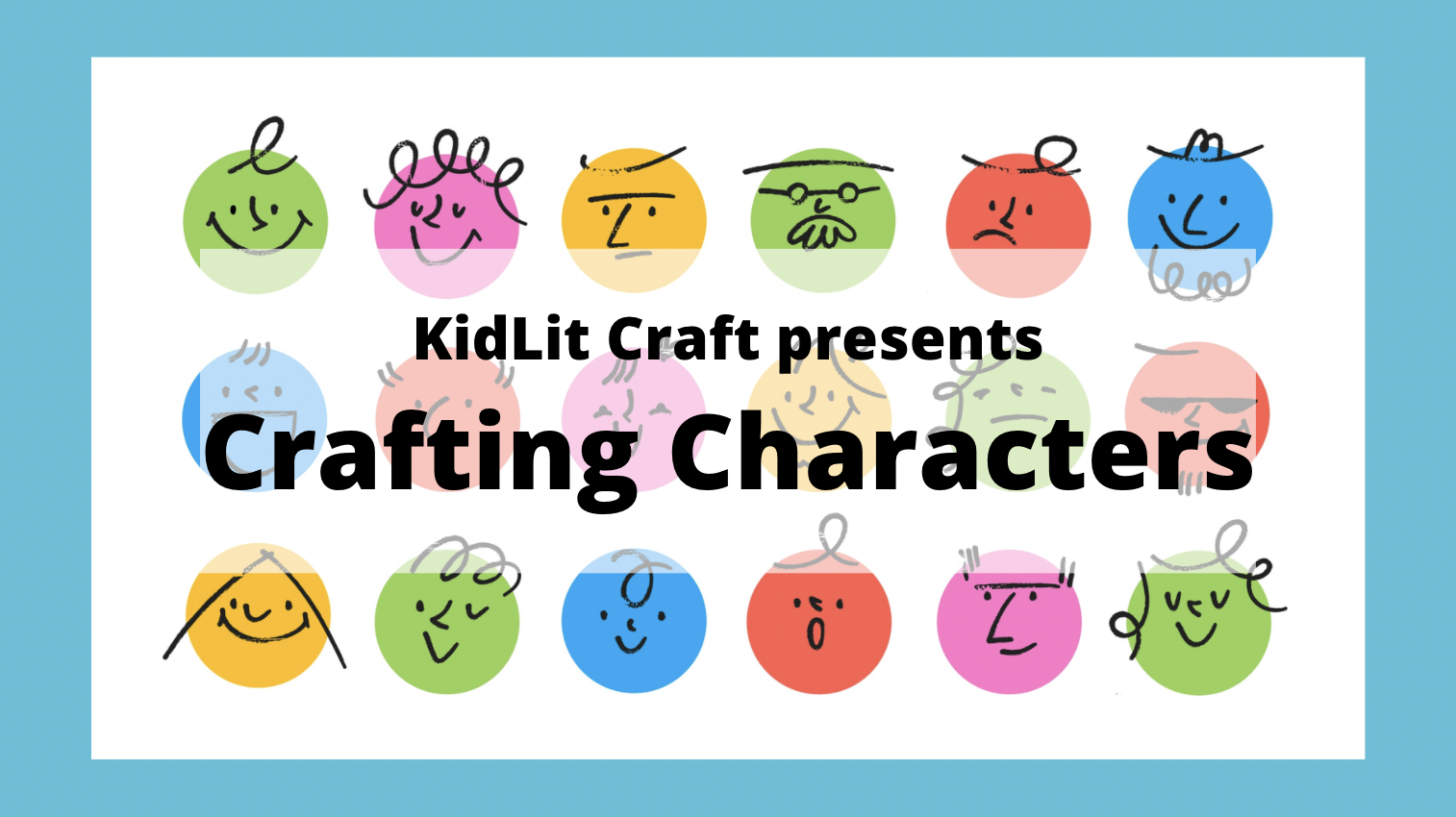Welcome to our first post of our April 2022 series, Crafting Characters. Character is the driving force of the story, but actually letting character drive our stories can be tricky. That’s where KidLit Craft comes in. We’ve asked authors and our contributors to share their favorite ways to develop their characters–by getting to know them, exploring character desire, and focusing on core relationships. Read on for some favorite freewriting strategies designed to dig deep and discover the essence of characters.
We hope you’ll inspired in ways that help you make your characters come to life. Share your favorite tips with us on Twitter or Instagram (@kidlitcraft #kidlitcraft #craftingcharacters), or Facebook (www.facebook.com/kidlitcraft).
Freewriting FTW
How I get to know my characters depends on where in the story writing process I am.
Before starting the story, I might do bubble maps of my character’s world and their characteristics. Or I might do a character interview.
While writing, I will put myself in my character’s shoes and imagine how they would act in specific situations.
If I get stuck, I will free-write — ideally in the morning soon after I wake up — in order to gain a deeper understanding of wants and motivations.
—Margaret Chiu Greanias, her most recent picture book is Amah Faraway
Questions & Free Write
I get to know my character by starting to write my story. This gives me a general feel for who my character is. Once I have a general feel, I spend some time freewriting responses to questions about my character. A sample list of questions can be found here. After I do that and have a more developed idea of who my character is, I like to use personality tests, such as 16 personalities, to delve even deeper into my character’s psyche. Then I rewrite my story!
—Stephanie Hohl, her early reader series is ABC See, Hear, Do
Asking Questions and Dreaming
I always start in a notebook, writing in freehand, who I think my main character is in the story. I envision them in a setting that could be in the opening scenes. I describe what is happening in the vision I see, exploring various reasons as to why the character is there, and what might happen next – the subsequent actions or decisions they will take. For example, if I see a character in a forest setting, I ask what they are doing there, and why they are in a forest. I ask if there is anyone else there with them, or if someone else will be joining them. Answering these questions often leads to other questions and answers. Exploring answers to these questions may give me the character’s backstory, point me to a possible inciting incident for the main character, reveal the characters desire, bring secondary characters onto the page, develop the setting as it relates to the main character, etc. I also like to put my character in conversation with another character. This begins to give me a sense of how authentic my character is, and how to pursue their story in a meaningful manner.
—Laura Obuobi, her debut picture book BLACK GOLD comes out in Oct 2022
Diaries
“I get to know my character by writing her diary entries. I ask her what she’s feeling – happy, sad, angry, anxious – and most importantly, why.”
—Darshana Khiani, her debut picture book is How to Wear a Sari
Freewriting Loosely
I’ve always dreaded this question! And writing exercises that ask this question in various guises. What does your character look like? What did your character eat for breakfast? What would your character wish for on their birthday? While other writers seemed to scribble away, I would stare at my blank page. Because… I had NO idea. These questions seemed to suggest that the answers were already there, fully formed, just waiting to be set down – when nothing could be farther from the truth. At least for me. There was so much pressure to have an answer, though I know that wasn’t actually the intent of the exercises, I’d freeze up. I just couldn’t see that end point. I couldn’t loosen up the old imagination to let a character develop.
Until I started free-writing.
Now, instead of answering a question, I jot down all my ideas – and let them take whatever form they like. They can describe the character’s actions or personality, or be bits of dialogue or, yes, tell me what they look like, wish for on their birthday, and eat for breakfast. But the key is, I put down whatever enters my brain for as many pages as it takes – sometimes returning to add details as they occur to me – until patterns start to take shape, and I indeed get to know my character. Lo and behold – perhaps they really were there all along.
—Kristen Giang, her latest picture book is The Rise (and Falls) of Jackie Chan
Here’s our prequel post to Crafting Character!
Anne-Marie Strohman (co-editor) writes picture books, middle grade novels, and young adult short stories and novels. She is trained as a teacher, an editor, and a scholar, specializing in Renaissance Literature. She holds an MFA in Writing for Children and Young Adults from Vermont College of Fine Arts and is an active member of SCBWI. Find her at amstrohman.com and on Twitter @amstrwriter.

COMMENTs:
0